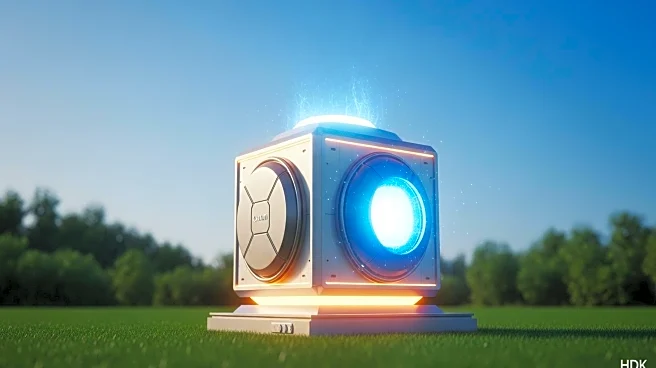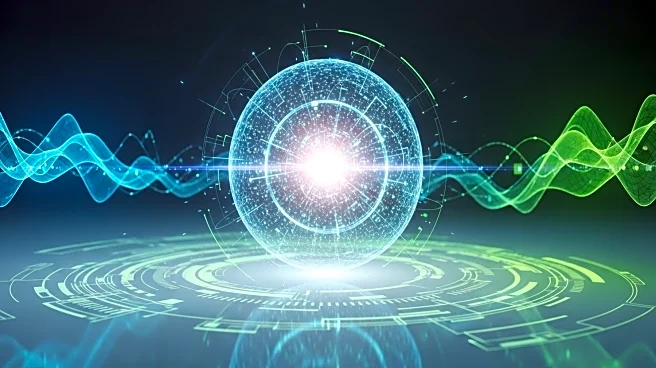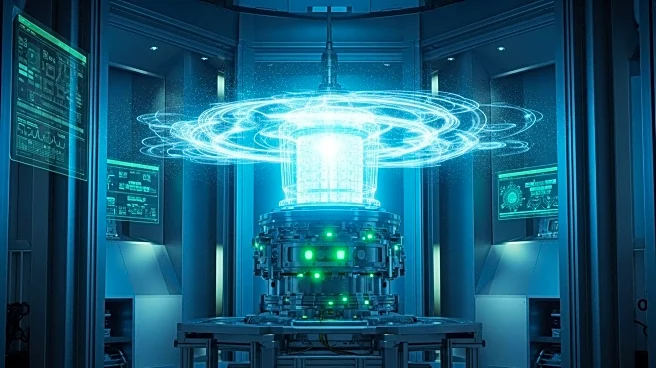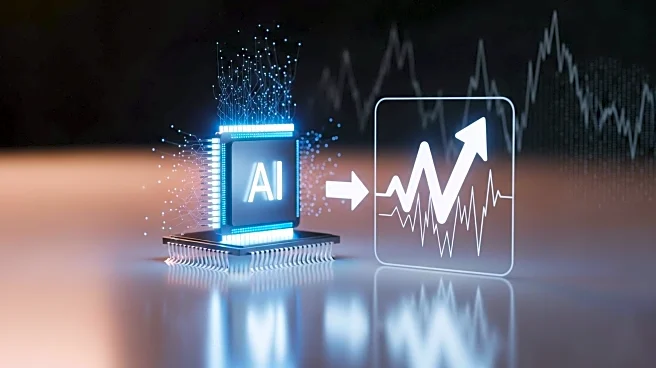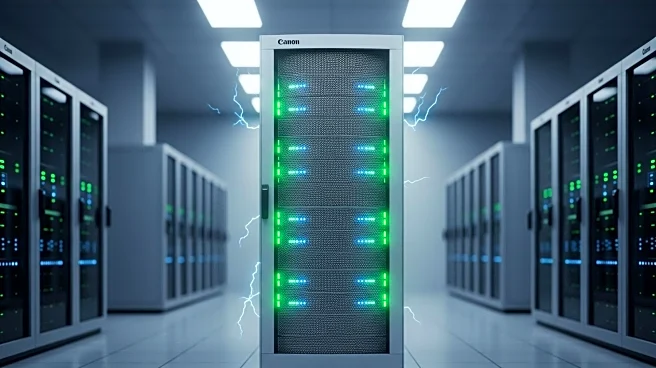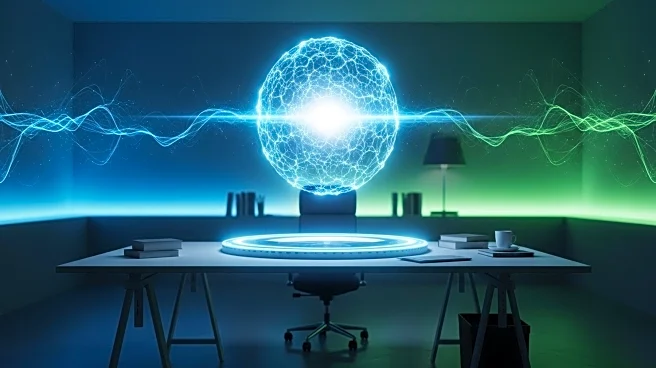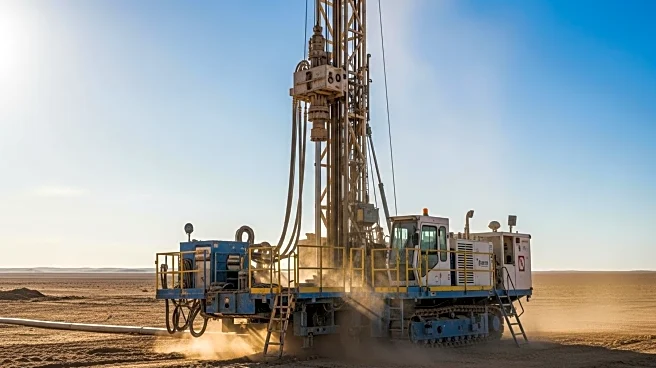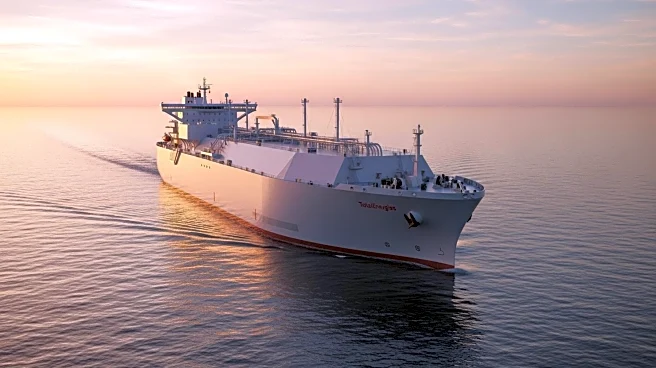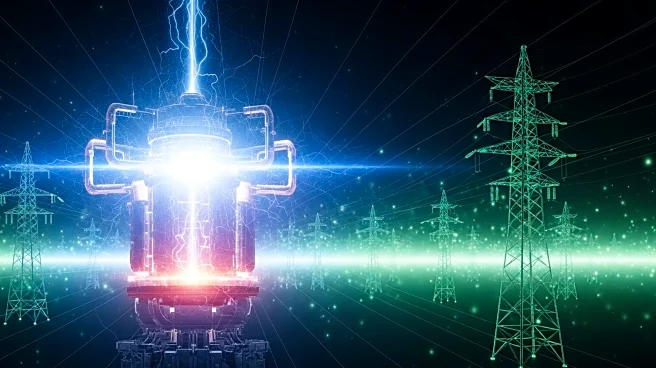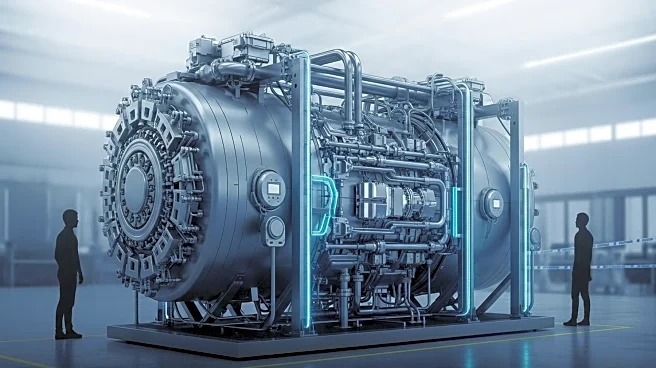What's Happening?
The United States is intensifying efforts to develop small modular reactors (SMRs) as a scalable solution to meet growing energy demands from data centers, industrial clusters, and electrification initiatives. SMRs are being positioned as a reliable, carbon-free onsite generation option that can support large energy users and improve grid resilience. The U.S. government is focusing on standardizing civil works, regulatory permitting, and infrastructure to facilitate rapid deployment of SMRs. Currently, there are seven SMR designs in construction or operation globally, with over 51 in the pre-licensing or licensing process. The U.S. aims to reform permitting processes and expand domestic capacity, exploring underground nuclear islands to minimize security risks and visual impact.
Why It's Important?
The development of SMRs is crucial for addressing the increasing energy demands of sectors like data centers, which require reliable and continuous power supply. By integrating SMRs with large energy users, the U.S. can enhance energy resilience and efficiency, reducing transmission losses and grid volatility. This initiative supports the country's decarbonization goals and provides a pathway for sustainable energy infrastructure. The success of SMRs could lead to significant investments, with the global pipeline for SMR projects exceeding 22 GW and an estimated $176 billion in planned investment. The U.S. stands to benefit from improved energy security and economic growth through the expansion of clean energy technologies.
What's Next?
The U.S. is expected to continue reforming permitting processes and standardizing infrastructure to accelerate SMR deployment. This includes strategic site selection, civil engineering readiness, and environmental assessments to ensure efficient delivery and minimized risk. The focus will be on aligning policy, industry, and finance to support SMR projects, with potential partnerships and agreements to drive momentum. As SMRs gain traction, investor confidence and private-sector involvement will be critical for scaling deployment and achieving long-term energy goals.
Beyond the Headlines
The push for SMRs highlights the broader shift towards modular and standardized energy solutions, which could redefine the nuclear power industry. The emphasis on underground nuclear islands and reduced safety risks reflects a commitment to addressing public concerns and enhancing security. This development also underscores the importance of collaboration between governments, operators, and investors to achieve successful energy transitions. The U.S. approach to SMRs may serve as a model for other countries seeking to balance energy demand with environmental sustainability.

